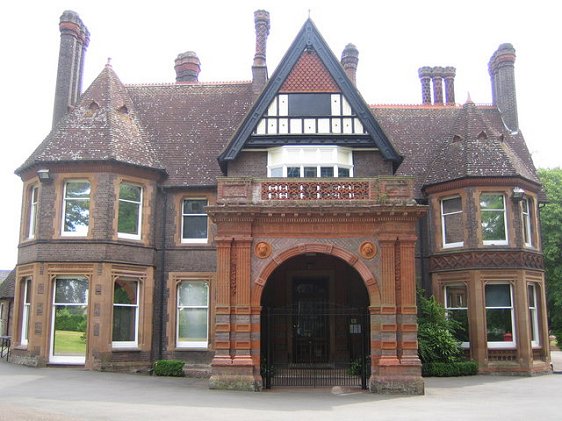 Bury Park, Luton, England: Source: https://commons.wikimedia.org/wiki/File:BuryPark.jpg
Bury Park, Luton, England: Source: https://commons.wikimedia.org/wiki/File:BuryPark.jpgAuthor: Nigel Cox

Luton is a town in Bedfordshire, England, about 51 km (30 mi) to the north of London. Covering 43.35 sq km (16.7 sq mi), it has a population of 206,000 people, and is best known as the location of the London Luton Airport, one of the airports serving London.
Human habitation in Luton goes back 250,000 years, to traces of a Paleolithic encampment found at Round Green and Mixes Hill. The town of Luton traces its history to around the 6th century, when a Saxon outpost was established on the River Lea. The settlement evolved into a village in the 12th century, when St Mary's Church was built. Other structure built during this period lend their names to various streets in town, including Castle Street and Mill Street.
Luton shares the griffin on its coat of arms with the Vauxhall in the London Borough of Lambeth. This is due to the association the towns had with Anglo-Norman soldier Sir Falkes de Breauté. Originating from the village of Bréauté near present-day Le Havre, France, he was a loyal soldier under King John and later King Henry III. King John gave him a manor in Luton. He also owned a manor in Vauxhall, due to his marrying the widow of the previous owner, Baldwin de Redvers. The name Falkes Hall evolved to Foxhall and eventually became the Vauxhall that we know today.
By the 18th century, Luton had made a name for itself as a hat-making town. The Industrial Revolution of the 19th century brought further development, including railway lines connecting it to stations in London and other nearby towns. Vauxhall Motors opened the largest car manufacturing plant in the country in Luton in 1905, at a time when the hat making industry was suffering a decline. Other companies moved into Luton, including Electrolux, producing household appliances.
 Wardown Park Museum, Luton: Source: https://commons.wikimedia.org/wiki/File:Wardownmuseum.jpg
Wardown Park Museum, Luton: Source: https://commons.wikimedia.org/wiki/File:Wardownmuseum.jpgAuthor: Nigel Cox
 Luton managed to sidestep a number of economic downturns that affected the rest of the country, experiencing economic boom even when unemployment levels were soaring elsewhere. This however did not save its automobile industry, and the Vauxhall plant eventually ceased operations in 2002. Today Luton focuses its attention on the retail and airport services.
Luton managed to sidestep a number of economic downturns that affected the rest of the country, experiencing economic boom even when unemployment levels were soaring elsewhere. This however did not save its automobile industry, and the Vauxhall plant eventually ceased operations in 2002. Today Luton focuses its attention on the retail and airport services.
Visiting Luton
From London, take the East Midland trains at London St Pancras station to Luton. If going by car, take the M1 motorway and turn off at Junction 10. The is the road to Luton Airport. To reach the town, turn off to the Kidney Wood Roundabout to London Road and head north.Places of Interest in Luton
- Wardown Park Museum: Museum with exhibits on Hertfordshire and Bedfordshire regimental gallery, among others.Address: Old Bedford Road, Luton, LU2 7HA; Phone: 01582 546722; Open Tue-Sat 10:00 am - 5:00 pm, Sun 1:00 pm - 5:00 pm
 Latest updates on Penang Travel Tips
Latest updates on Penang Travel Tips

Copyright © 2003-2025 Timothy Tye. All Rights Reserved.

 Go Back
Go Back